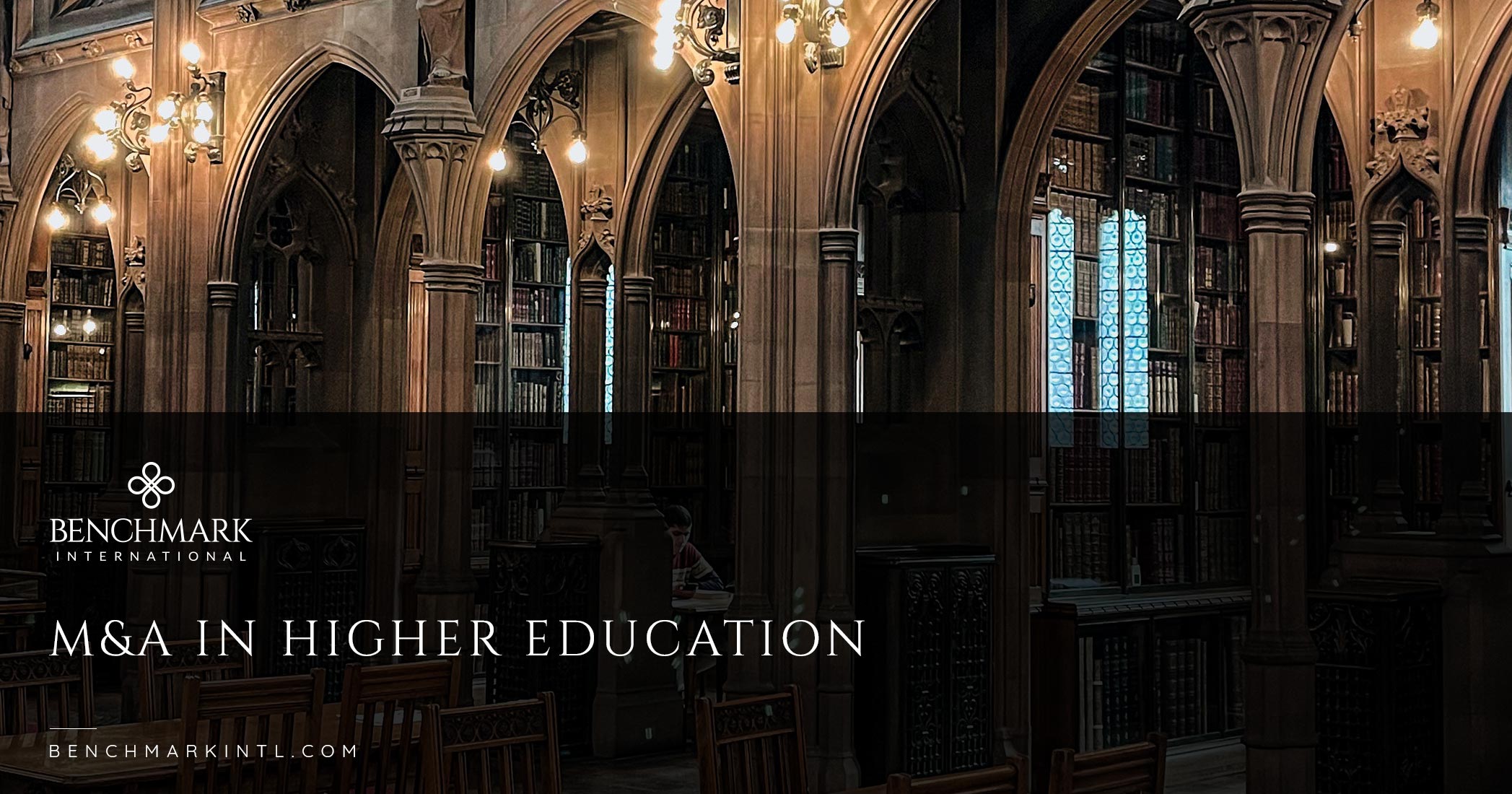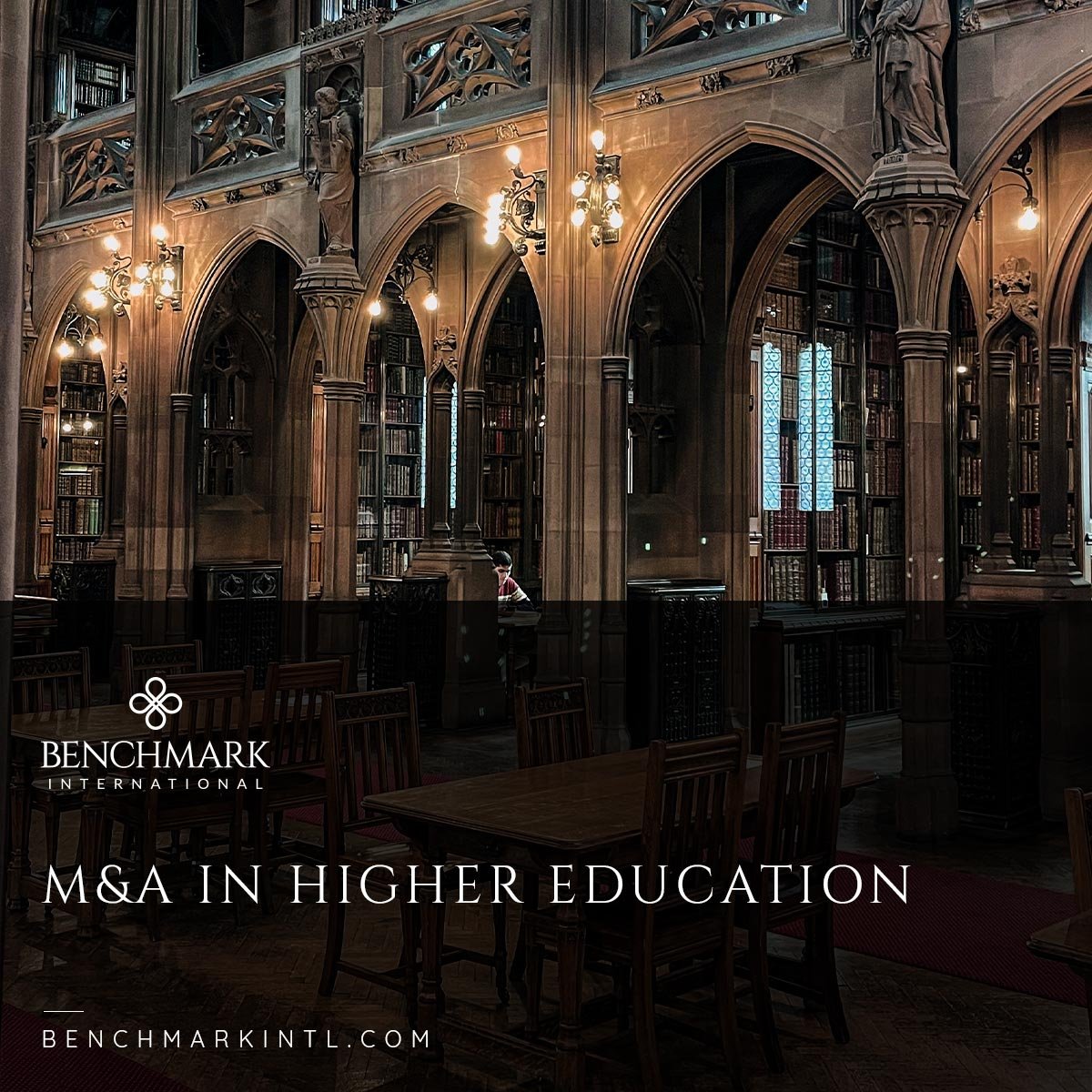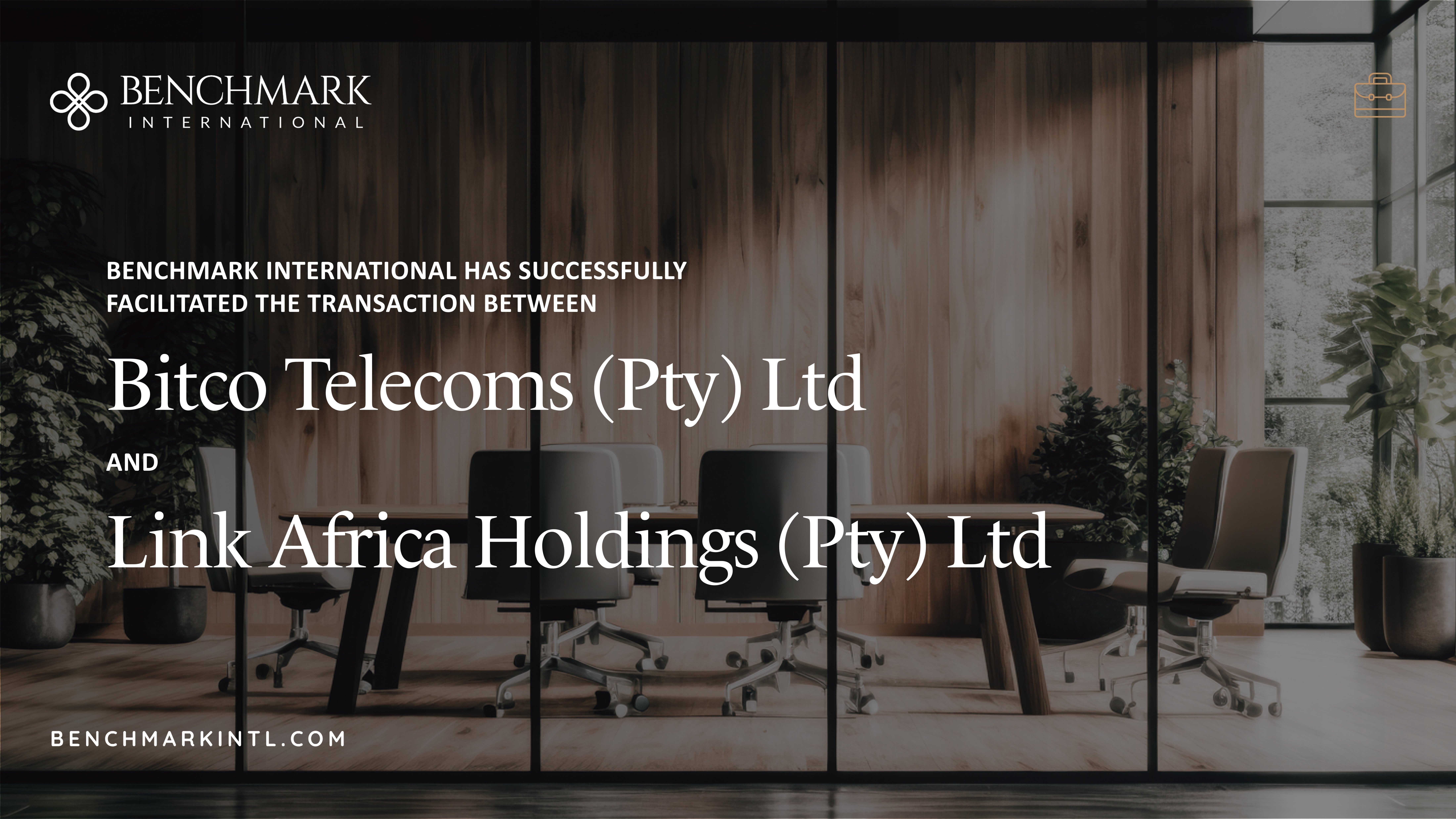
Higher education institutions have been facing a watershed moment. Flagship universities and brand-name colleges are still drawing enrollees. But the number of colleges that have closed in the last decade (~200) has quadrupled over the previous decade. This is why mergers and acquisitions in higher education are becoming more commonplace than ever. In fact, in the last four years, there have been 95 college mergers—a 21% increase over the 78 that took place in the 18 years prior. Most of these mergers (40%) are being executed within private and nonprofit schools, and most deals involve schools in the same state with student bodies under 5,000. It is the less prestigious schools that are struggling the most.
This M&A trend is especially prevalent in the U.S. An excellent example is the state of Pennsylvania’s merger of six universities into two. However, many other countries are also seeing significantly higher M&A activity, such as the U.K., France, and China.
When the COVID-19 pandemic ensued in 2020, the U.S. government gave colleges $76 billion to help them avoid financial peril. Unfortunately, it was essentially a short-term solution that enabled struggling schools to delay the inevitable.
Changing Demand
Just as many business decisions are made, the trend with colleges is largely about supply and demand. Demand for college degrees is down because of rising prices that are causing many people to reconsider the economic aspects of a college education. Enrollment is shrinking. There are also new alternatives to college that are relatively inexpensive and closely aligned with the labor market. For example, big tech companies like Google, Microsoft, and Coursera offer courses for just a fraction of the price of what college tuition would be for a similar education.
Also, schools are competing for a smaller pool of students as higher education is becoming viewed as privileged or elitist because many people simply cannot afford the cost or the debt that comes with it. Some education costs have become so high that many students and parents feel that it is not worth the money.
It is also worth mentioning that there are a profuse amount of educational institutions, many of which offer the same types of programs. This puts added pressure on small and medium-sized schools that receive very little in endowments at a time when operating costs are on the rise. This is leading the nonprofit higher education sector to look at for-profit institutions that are falling out of favor. These schools are looking at M&A strategies to create growth by tapping into new markets and customers, adding new technologies, and gaining efficiencies in operations.

Another reason is that the general sentiment around the college is undergoing a shift. As of 2019, just 51% of U.S. adults said they considered a college degree to be “very important.” This is down from 70% in 2013. This trend is expected to continue. Laborers and employers are embracing alternatives for post-high-school education. More than 10% of Americans in low hourly wage jobs have upgraded to more skilled tech jobs in the past two years without the burden of student loans. Also, many big tech firms are becoming more amenable to hiring people with cost-efficient and highly specified online course certifications.
Some colleges have tried to address falling revenues by cutting classes and services. But this just compounds the reasons for enrollment challenges. How do you increase enrollment when you are offering less? These schools have been dubbed “zombie colleges.” They view enrollees as sources of revenue rather than a segment that they can serve and offer a benefit. It’s more about quick fixes to systemic challenges, cutting value instead of finding ways to evolve, improve, and create a meaningful experience for students.
Higher education institutions are heavily influenced by various stakeholder groups, especially in the U.S. and the U.K. In America, nearly 80% of higher education spending comes from private sources such as donors and alumni. Yet, in Scandinavian countries, nearly 100% of investment in higher education comes from the public sector, meaning that the taxpayers fund universities. This complicates matters such as M&A because you have so many more stakeholders who feel that they should be involved in such decisions.
M&A Momentum Staying Strong
Mergers and acquisitions in the realm of higher education can be expected to increase over the next decade. Most governing boards of colleges or universities are not accustomed to making decisions around mergers or acquisitions, and the process can be challenging. M&A deals offer great potential for those who take them seriously and can see the benefits. If schools choose to ignore the option, they may find themselves with fewer options when push comes to shove. The most successful mergers will be those that are conducted by schools that have properly thought through their strategies and have prepared to adapt to post-merger integration processes.
Enlisting the guidance of an external consultant, such as an M&A advisor, can be crucial as helping a school board understand its position better and identify the best options for potential M&A strategies. It is best to start the process when the school is still sustainable rather than waiting until the situation is dire in order to negotiate a favorable transaction. An M&A expert can help narrow the field of prospective partners or buyers, manage the expectations of the board, and broker the best deal in the best interest of the institution.
Europe: Michael Lawrie at +44 (0) 161 359 4400 / Lawrie@BenchmarkIntl.com
Americas: Sam Smoot at +1 (813) 898 2350 / Smoot@BenchmarkIntl.com
Africa: Anthony McCardle at +27 21 300 2055 / McCardle@BenchmarkIntl.com
ABOUT BENCHMARK INTERNATIONAL:
Benchmark International is a global M&A firm that provides business owners with creative, value-maximizing solutions for growing and exiting their businesses. Benchmark International has handled over $9.4 billion in transaction value across various industries from offices across the world. With decades of M&A experience, Benchmark International’s transaction teams have assisted business owners with achieving their objectives and ensuring the continued growth of their businesses. The firm has also been named the Investment Banking Firm of the Year by The M&A Advisor and the Global M&A Network as well as the #1 Sell-side Exclusive M&A Advisor in the World by Pitchbook’s Global League Tables.
Website: http://www.benchmarkintl.com
Blog: http://blog.benchmarkcorporate.com

 Benchmark International
Benchmark International  Benchmark International
Benchmark International 



